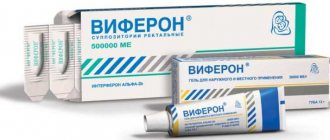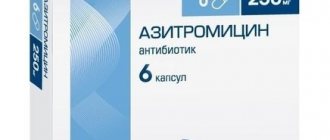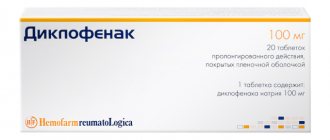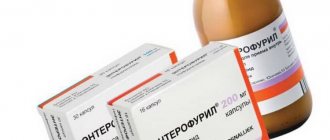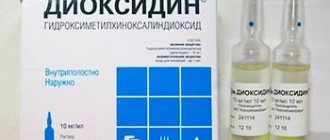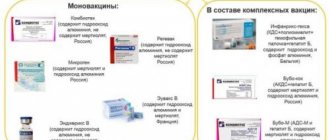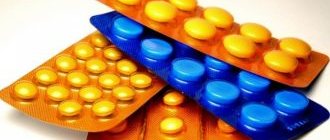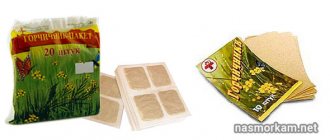1196
Relatively low cost and widespread use make Augmentin one of the most popular antibiotics. The main active ingredient of the drug is amoxicillin, presented in the form of a sodium salt. This drug is sold without a prescription, but before using it you should consult your doctor and carefully study the accompanying instructions for use.
Indications for use of the drug
"Augmentin" is prescribed to children for infections of the upper and lower respiratory tract, such as sinusitis, otitis media, pharyngitis, tonsillitis, bronchitis, pleural empyema, pneumonia, and lung abscess. The drug is effective for infectious diseases of the genitourinary tract: cystitis, pyelonephritis, urethritis, salpingitis, vaginitis, etc. The doctor recommends using the antibiotic for bacterial infections of soft tissues and skin, bones and joints, peritonitis, sepsis and postoperative inflammatory ailments.
The suspension is contraindicated in case of hypersensitivity to cephalosporins, penicillins and auxiliary elements of the drug. Also, Augmentin should not be given to children if they suffer from jaundice or have impaired liver function. If an erythematous rash or urticaria appears, drug therapy is discontinued. It is also necessary to refrain from using an antibiotic if infectious mononucleosis is suspected.
The diluted suspension must be stored in the refrigerator for no more than 7 days. While taking the drug, side effects such as allergic reactions, darkening of tooth enamel, headache, convulsions, enterocolitis, gastritis, vomiting, etc. may occur.
Dosage of the drug and its effectiveness
For small patients under 1 year weighing 2-4 kg, it is recommended to take 2.5 ml of Augmentin 125 (125 mg amoxicillin in 5 ml), weighing 5-9 kg, it is necessary to give 5 ml three times a day. Children from 1 year to 5 years weighing 10-18 kg are given 10 ml three times a day. Children 6-9 years old weighing 19-28 kg are prescribed 15 ml of suspension three times a day. Patients aged 10 to 12 years weighing 29-31 kg are recommended to take 10 ml of Augmentin 400 with a dosage of 400 mg of amoxicillin per 5 ml. Children over 12 years of age take 500 mg tablets three times a day.
Augmentin has been studied quite well. It is recognized as the most effective antibiotic in its group. It should also be remembered that the required dose of the drug is calculated by the attending physician, depending on the severity and nature of the disease, weight and age of the patient. To prepare the suspension, you need to use warm boiled water. The bottle should be shaken before each use. It is advisable to take Augmentin before meals. Strict adherence to the doctor’s prescriptions, adherence to the rules of use and dosage will give the maximum effect from taking the antibiotic and the little patient will quickly recover.
The antibacterial drug Augmentin for children is used in the treatment of various diseases. The antibiotic copes well with a wide range of pathogens. However, like any drug, it has contraindications for use and side effects.
For liver dysfunction
In patients with renal dysfunction, dose adjustment is based on the maximum therapeutic dose of amoxicillin and is carried out taking into account creatinine clearance (CC) values.
When taking Augmentin tablets at a dosage of 500 mg/125 mg or 250 mg/125 mg, as well as a suspension at a dosage of 125 mg/31.25 mg in 5 ml, in adult patients whose CC exceeds 30 ml/min, there is no need for dose adjustment. If the CC value is from 10 to 30 ml/min, patients are recommended to take 1 tablet of 500 mg/125 mg or 1 tablet of 250 mg/125 mg (for mild to moderately severe infection) 2 times a day or 20 ml of a suspension of 125 mg/ 31.25 mg in 5 ml 2 times a day.
If the CC value is less than 10 ml/min, Augmentin is used in a dosage of 1 tablet 500 mg/125 mg or 1 tablet 250 mg/125 mg (for mild to moderately severe infection) once a day or 20 ml of suspension 125 mg/31.25 mg in 5 ml 1 time per day.
Tablets 875 mg/125 mg are prescribed only to patients whose CC exceeds 30 ml/min, so no dose adjustment is required. In most cases, it is recommended to give preference to parenteral administration of Augmentin.
When used in adults and children over 12 years of age or weighing more than 40 kg who are on hemodialysis, the recommended dose of Augmentin is 1 tablet 500 mg/125 mg (2 tablets 250 mg/125 mg) once every 24 hours or 20 ml suspension 125 mg/31.25 mg 1 time per day.
During the dialysis procedure, as well as at the end of it, the patient receives an additional tablet (1 dose), which helps compensate for the decrease in the concentrations of clavulanic acid and amoxicillin in the blood serum.
In patients with liver dysfunction, treatment is carried out with caution. It is recommended to regularly monitor the condition of the liver. The limited data regarding the use of Augmentin in this category of patients does not allow for correction of the dosage regimen.
What type of antibiotic is Augmentin?
The antibiotic Augmentin belongs to combination drugs of synthetic origin and antibacterial agents of the penicillin group. It contains:
- amoxicillin trihydrate;
- potassium clavulanate (clavulanic acid).
The drug is available in several dosage forms: powder for injection, tablets, syrup and dry substance for preparing a suspension. Children under 12 years of age are prescribed syrup or suspension. These forms are well tolerated even by children, but it is impossible to completely exclude the development of an allergic reaction. This fact must be taken into account when prescribing medicine to children (monitor the body’s reaction after the first dose).
Let's sum it up
Many four-legged owners abuse antibiotics, buying drugs at the slightest sign of illness. Such an approach is fraught with the emergence of resistance of pathogens to antibacterial agents. Therefore, before purchasing antibiotics, you should strictly follow the veterinarian’s recommendations. Do not forget that these drugs are not recommended for use in the treatment of viral diseases. To avoid the use of drugs with such a spectrum of action, it is necessary to regularly check the health of your pet with a veterinarian and monitor the quality of food.
Augmentin - indications for use in children
The drug must be used in strict accordance with medical prescriptions. The pediatrician indicates the dosage and frequency of administration of the drug Augmentin, the indications for use of which are as follows:
- infectious processes of the upper respiratory tract, including diseases of the ear, nose and throat (sinusitis, tonsillitis, otitis media);
- severe inflammatory processes in the organs of the respiratory system - lobar pneumonia, bronchopneumonia;
- diseases of the urinary system – urethritis, pyelonephritis, cystitis;
- infections of the skin and soft tissues;
- infectious processes in bone tissue.
Augmentin - contraindications for use
The drug is well tolerated by children, but it cannot always be used. Doctors take this feature into account when prescribing Augmentin to children, the contraindications for use of which are as follows:
- hypersensitivity to the components of the drug;
- intolerance to penicillin antibiotics;
- the presence of episodes of jaundice due to previous use of a combination of amoxicillin and clavulanic acid.
It is also necessary to separately indicate contraindications for each form of medication:
- tablets 250 mg and more are not prescribed to children under 12 years of age weighing less than 40 kg;
- powder for preparing the suspension is contraindicated in infants under 3 months and children with phenylketonuria.
Use in old age
The use of Augmentin for children is permitted according to indications in compliance with the dosage regimen:
- powder for the preparation of a suspension for oral administration and powder for the preparation of a solution for intravenous administration - from birth;
- Film-coated tablets – from 12 years of age.
There is no need to reduce the dose for elderly patients: it is prescribed in the same doses as for adult patients. In elderly patients with renal dysfunction, the dose must be adjusted in the same way as for patients with renal failure.
How to give Augmentin to children?
When talking about how to take Augmentin for children, pediatricians draw attention to the need for precise dosage compliance. Before use, the powder is diluted with the required amount of liquid (boiled water). For convenience, the label of the Augmentin bottle for children contains a level mark to which it needs to be filled with water. After this, screw the bottle tightly and mix the medicine thoroughly, shaking it for 2 minutes.
Take the antibiotic Augmentin for children in strict accordance with medical prescriptions. For easy dosing, use the measuring cap included in the kit or a syringe. To reduce the irritating effect of the drug on the gastric mucosa, the medicine is given to the child a few minutes before meals. After each use of the medicine, the measuring cup is thoroughly washed, dried and reused.
Augmentin - side effects in children
Suspension for children Augmentin in some cases may cause side effects when used. When they appear, stop taking the drug and report the incident to the pediatrician. If Augmentin's side effects are severe, it may be necessary to change the medication. Among such manifestations are:
- deterioration of the gastrointestinal tract (spasms, diarrhea, nausea and vomiting);
- disruption of the immune system - allergic reactions;
- disruption of the circulatory system - formation of blood clots;
- deterioration of liver function – hepatitis;
- depression of the central nervous system - headaches, dizziness, convulsions;
- Skin disorders – erythema, itching.
Adverse reactions
During clinical trials of the drug, cases of side effects were recorded:
The drug Augmentin can cause disturbances in the functioning of the gastrointestinal tract
- Dyspepsia is a disorder of the gastrointestinal tract, manifested by malaise, a feeling of heaviness, and fullness in the abdomen.
- Gallbladder dysfunction, liver failure.
- Intestinal colic is a painful, paroxysmal ailment in the lower abdominal cavity.
- Quincke's edema is severe swelling of the upper digestive tract.
- Urticaria - rashes on the skin.
- Anaphylactic shock is an acute response of the body to the administration of a substance. Accompanied by pain, swelling, redness with possible itching. Less often, dyspepsia, respiratory failure, hypoxia, and in rare cases, loss of consciousness may occur.
- Stevens-Johnson syndrome is a prolonged allergic reaction in which the epidermis and mucous membrane of internal organs are damaged.
- Candidiasis is a fungal disease of the genital organs due to a violation of the internal microflora.
- Polymorphic erythema is a febrile condition with the appearance of a rash on the skin and a temperature of forty degrees. Sometimes there is pain in the muscles and joints.
- Phlebitis is an inflammation localized in the vascular walls.
Augmentin is known in all developed countries of the world and is one of the ten best-selling drugs. Reviews from both patients and doctors about the drug are positive and this explains its choice.
What can replace Augmentin for a child?
If the drug Augmentin is poorly tolerated for children, and a reaction develops on the part of the small organism to taking it, mothers often think about what can replace Augmentin. There are a large number of analogues on the pharmaceutical market, so choosing the right drug for your child will be easy. In this case, it is necessary to adhere to the recommendations received from the pediatrician who performed the treatment:
- Read the instructions.
- Consider the child's age.
- Follow the indicated dosages and frequency of taking the medication.
- If there are any changes in the baby’s well-being, inform the doctor.
Among drugs containing amoxicillin used to treat children, the following are most often prescribed:
- Amoxiclavkviktab;
- Amoxil-k;
- Zopercine;
- Camox-clave;
- Amoxiplus;
- Bactoclav;
- Vampilox.
Antibacterial drugs can effectively treat many diseases that develop as a result of the activity of pathogenic bacteria. It is permissible to use such potent drugs only as prescribed by a doctor, especially when it comes to treating a child. The drug Augmentin is widely used as an antibacterial substance. We will talk about its composition, forms of release, rules of use, contraindications, as well as the calculation of the “children’s” dosage in this article.
Composition of the drug Augmentin and release forms
The main active ingredients included in Augmentin are amoxicillin trihydrate and clavulanic acid. Depending on the form of release of the drug, their concentration, as well as the content of auxiliary components, varies. Today, pharmaceutical companies produce several forms of the drug:
- pills;
- powder for the preparation of injection solutions or suspensions for oral administration;
- coated capsules with prolonged action.
Indications for taking an antibiotic
The drug is indicated for the treatment of a number of inflammatory processes of infectious (bacterial) origin, including:
- gynecological (caused by enterobacteria, for example, Escherichia coli; saprophytic staphylococci; enterococci), urological (cystitis, pyelonephritis, urethritis, etc.), gonorrhea;
- affecting the upper and lower respiratory tract (otitis media, tonsillitis, sinusitis, bronchitis, etc. (we recommend reading: sinusitis in children: treatment at home).);
- spreading to soft tissues and skin (caused by Staphylococcus aureus, Streptococcus pyogenes, etc.);
- affecting bones and joints (osteomyelitis, etc.);
- odontogenic (periodontitis, abscesses in the oral cavity, etc.);
- for diseases caused by mixed type infections.
Taking Augmentin, including a suspension, can be recommended as a preventive measure before a planned operation - the set of preparatory measures will necessarily include antibacterial therapy.
Augmentin in tablet form
Use during pregnancy and lactation
The results of studies of reproductive function in animals with parenteral and oral administration of Augmentin confirm the absence of teratogenic effects caused by the drug. A single study of patients with premature rupture of membranes suggests that prophylactic therapy with this antibiotic may increase the risk of necrotizing enterocolitis in newborns.
Augmentin may be prescribed during lactation. However, if children develop adverse reactions (candidiasis of the oral mucosa, diarrhea, increased sensitization), it is recommended to stop breastfeeding.
Instructions for use of the drug for children
The course of taking the drug will depend on the individual reaction of the child’s body to the therapeutic effect. Augmentin in tablet form 875/125 is not prescribed to small patients under 12 years of age, but it should be taken into account that the drug in the form of extended-release tablets cannot be taken by adolescents under 16 years of age, unlike tablets 250/125 and 500/125 .
The doctor calculates the therapeutic dose of the medicine taking into account the following factors:
- the patient's kidney condition;
- weight and body weight of the patient;
- localization of the source of infection;
- features of the course of the pathological process, the degree of its severity;
- the causative microorganism and the degree of its sensitivity to the active ingredients of the drug.
How to give an antibiotic to a dog?
It is not recommended to select the drug on your own. In addition to the fact that the medication may not help in treating the disease, its use is fraught with complications.
Antibacterial drugs can only be used as prescribed by a veterinarian
Admission rules:
- Before choosing a product, it is necessary to give the dog a sensitivity test and conduct a laboratory test to determine its susceptibility to the active substances.
- If your pet has a viral disease, antibiotics are used only in case of complications.
- It is prohibited to deviate from the dosage specified in the instructions. This is fraught with intoxication of the body.
- The antibiotic must be administered at the same time every day. This is due to the fact that the level of medication in the blood must be constantly maintained.
- If signs of improvement appear, you should not stop the course of treatment. It is necessary to strictly adhere to the terms of therapy specified by the doctor.
- If an antibiotic is prescribed in the form of tablets, it is forbidden to forcibly squeeze the pet’s jaw. This may cause injury.
- If you have difficulty taking the tablets, the drug should be crushed and mixed with minced meat, canned food or porridge. You must first read the instructions, since not all products can be combined with food.
The tablet should be placed on the root of the tongue and the dog should be allowed to swallow it.
An overdose of the drug is accompanied by diarrhea and vomiting. Sometimes deafness is possible.
Injections cannot be given intravenously: only subcutaneously or intramuscularly
Rules for choosing a syringe
To reduce pain when injecting medication, you need to choose the needle size wisely.
Table 3. Rules for selecting a syringe
| Dimensions of the dog | Syringe characteristics |
| Small | Insulin:
|
| Medium or large | Since the dosage is calculated based on the weight of the animal, a 2 or 5 ml syringe should be used. In order not to unnecessarily injure the skin tissue, you should attach a needle of small diameter |
If you plan to inject into the fat layer, you need to buy an insulin syringe. The length of its needle allows it to deliver the medication under the skin of both large and smaller dogs without touching the muscle. For an intramuscular injection, a larger needle is required.
When selecting the length of the needle, you need to proceed from the method of administering the medication
You also need to take into account the viscosity of the drug. Some products are oil-based. Due to the high density of the drug, a needle with a diameter of 0.5 to 0.7 mm is required.
Calculation of the division price
Before placing the drug into the syringe, you should calculate the amount of drug contained between two adjacent marks. This is done in order to accurately measure the required volume of the drug. To do this, you need to find a mark adjacent to the cone on which the needle is placed. Then you need to count the number of divisions that are located between this number and the tip, and divide the first indicator by the second.
For example, on a 20 ml syringe, the number closest to the tip is 10. The number of divisions is 5. When dividing 10 by 5, we get 2. Accordingly, between the two divisions there is 2 ml of medication.
Antibiotics have a negative impact on your pet's health, so they should be used only in emergency cases.
